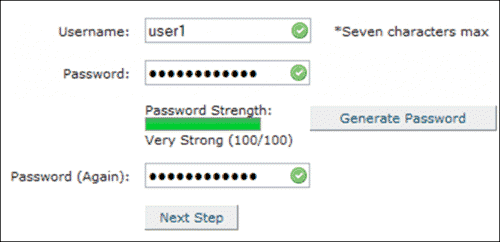1. How To Install WordPress On cPanel?
If your hosting provider does not offer WordPress installation, you can do this from the cPanel, using Softaculous. Here are the steps:
- Head over to cPanel -> Home -> Software
- Select Softaculous Apps Installer.
- From the menu on the left, type “WordPress in the search bar.
- Select the WordPress icon that will show up.
- From the menu that appears, click on “Install”.
- Next, you have the option to choose a quick install or a custom one. The forms that you will need to fill in will be different, depending on your choice.
- A form will show up, so fill it in. There are some pre-filled default values, you can leave them as they are if you want.
- Next, you need to specify the Installation URL, meaning the domain where you want to install WordPress.
- Next, it’s time to fill in the WordPress admin username, password, and email address. Then you must select the language in which you want to install WordPress.
- When the form is filled in, just hit “Install” at the bottom of it.
Aaaand, you’re done!
2. How To Install WordPress Manually Using cPanel
- Installing WordPress in cPanel Manually. Download WordPress. Upload WordPress Install Script to Server. Create a MySQL Database and Database User. Create Database Users. Assign User to Database and Assign Permissions. Edit wp-config.php File.
- Run WordPress Install Scripts. Complete the WordPress Installation.
Download WordPress
Download the most recent official version of the CMS from the WordPress website. Download the zip file, and save it to your desktop computer.
Once the zip file has been downloaded, go to its directory and extract the entire archive. Note the location of the extracted content, and upload it to your web server.
Upload WordPress Install Script to Server
1. Go to your cPanel account. You will find it by browsing to your_domain_name.com/cpanel.
2. Enter your user credentials and log in.
3. Find the File Manager tool and open it.
4. Look for the public_html directory. The public_html directory is your web root, the directory in which you want to store all your websites.
5. You need to decide on the location of your WordPress site. There are two options:
- In the root directory of your domain (e.g., your_domain_name.com/)
Upload all contents of the WordPress folder, but not the folder itself. After the upload, all WP files and subfolders should reside in public_html.
- In a subfolder of your domain (e.g., your_domain_name.com/site1).

Upload the entire WordPress folder. When finished, rename the WordPress folder to your desired name (e.g., MyBlog).
6. After you have extracted the WordPress installation archive, go ahead and delete the zip file from your web server. Right-click on the zip file and hit Delete.
The files should be extracted into a folder named WordPress. All the necessary WordPress folders and files should be listed in that folder. Right now, you can initiate the WordPress install by browsing to your_domain_name.com/wordpress.
However, before proceeding to the installation procedure, you need the following:
- A MySQL Database.
- A MySQL Database User with appropriate user credentials.
- A Database host.
- Table prefix if you want to run multiple WordPress sites in a single database.
- A Unique Phrase and Salt Key.

If you haven’t created a MySQL database and database user, navigate back to cPanel to create one.
Create a MySQL Database and Database User
To accomplish this, use cPanel’s MySQL Database Wizard. Find this tool under the Database heading.

1. The first step is to create a Database. Name your database. Your hosting account name will prepend it.
2. Remember your database name. You will need it later.
3. Click Next Step to create the database.
Create Database Users
Next, the wizard will prompt you to create a database user.
1. Enter a username (seven characters maximum) and a password. Ideally, you want the strength meter to turn green and read Very Strong, indicating that the password is bulletproof. Your hosting account name will prepend the username.
2. Note your password, or store it in a password manager, such as KeePass.
Assign User to Database and Assign Permissions
The newly created user doesn’t have access to the database.
1. Find the Add User To Database section of the page.
2. Under the User drop-down menu, select your newly created user.
3. Choose your newly created database under the Database drop-down menu and click Add.
4. The next step would be to assign database privileges. For the initial database user, select the All Privileges checkbox.
5. Click Make Changes to assign privileges to the user.
6. To verify, go back and scroll down to view current databases. There should be a database and a privileged user assigned to the database.
Once this has been set up, you can navigate back to your_domain_name.com/wordpress and complete the installation.
Edit wp-config.php File
The database has been created, and the newly created superuser has been assigned to the database. To complete the process, you must edit the wp-config-sample.php file using a text editor.
Admins need to insert four (4) pieces of information to complete the process. The lines below are an example, and the information you insert may look different.
// ** MySQL settings - You can get this info from your web host ** //
/** The name of the database for WordPress */
define('DB_NAME', 'michaelh_demowp');
/** MySQL database username */
define('DB_USER', 'michaelh_dbuser');
/** MySQL database password */
define('DB_PASSWORD', 'abc.123.!@#');
/** MySQL hostname */
define('DB_HOST', 'localhost');The important pieces of information are:
- DB_NAME. Database name.
- DB_USER. Username of the database user.
- DB_PASSWORD. This is the database user password.
- DB_HOST. In 99% of cases, it’s ‘localhost.’
Make sure to include the prepended parts when typing the value for DB_NAME and DB_USER. Additionally, bear in mind that for most cPanel hosts, the DB_HOST value is ‘localhost.’
Update Default Unique Keys and Salts
While still editing the wp-config-sample.php file, find the Authentication Unique Keys and Salts section of the document. Enter your Unique Key and Salt under the section mentioned above.
Create a Unique Key and Salt by visiting https://api.wordpress.org/secret-key/1.1/salt/. The WP API will generate a unique phrase and key. Copy them and replace the default wp-config-sample.php keys.
Rename the wp-config-sample.php
Save the completed file as wp-config.php. Do NOT save the file with its default name.
Potential Database Errors
If you encounter database connection errors, verify that the information typed into the wp-config.php file is correct.
When doing a document root installation, the wp-config.php file is located in the /home/cPanelAccountName/public_html directory.
Run WordPress Install Scripts
To finish the installation, run the install script by browsing to your WP’s directory.
- If you uploaded the files to the root directory, browse to
http://your_domain_name.com/wp-admin/install.php - If you uploaded WP installation files to a subfolder, browse to
http://your_domain_name.com/site1/wp-admin/install.php
In each case, once the install scripts are initiated, WordPress will prompt you to enter database details and write them in a new wp-config.php file. If this fails, you can go back and edit and upload the wp-config.php file yourself.
Complete the WordPress Installation
The next step is the well-known five-minute WP installation procedure. Enter details such as Site Title, your desired WordPress Username and Password, and your Email Address. Please note that the username and password are for this instance of WordPress only. Do not enter the same username and password you used for your database user.

All of this information can be changed later in the WordPress Admin.










